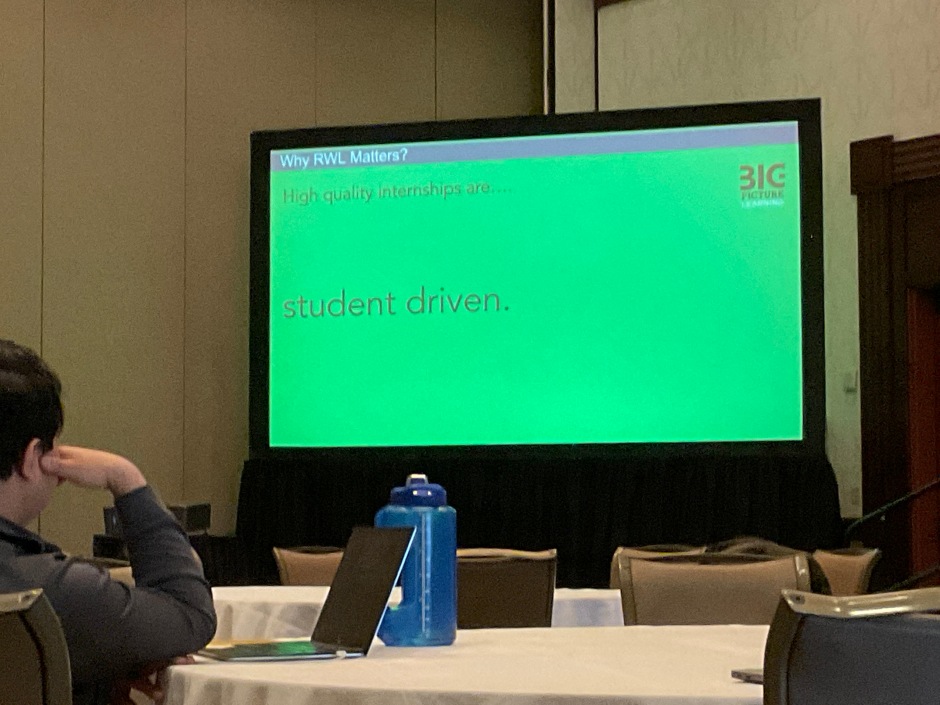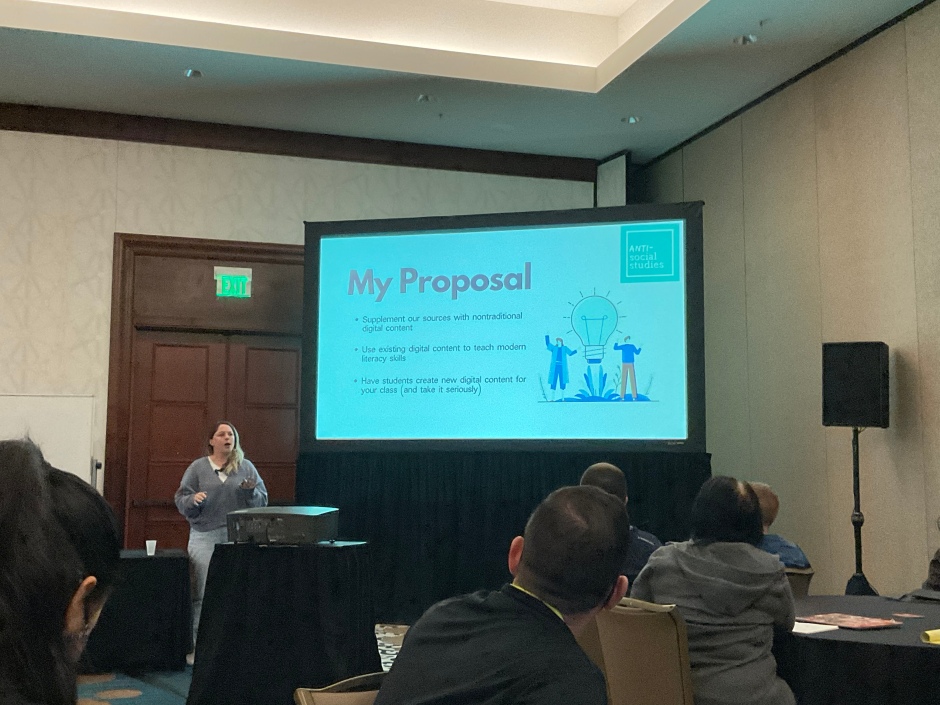Day one of SXSW was great! Loved meeting new people and re-connecting with those I haven’t seen in several years, and had so many great conversations already about the future of edu. One conversation that really resonated with me was the session lead by Emily Glankler called ”Going Beyond the Textbook to Create Life-Long Learners.”
The session focused on the idea that if we want to create life-long learners, then we need to teach kids ways to learn beyond textbooks, because when does any adult actually choose a textbook as their first source of information? Close to never. Let’s be real, we Google it. Then we look at Wikipedia then maybe we research a bit more, maybe find a news site, maybe text a friend, watch a YouTube video, look at Twitter updates for a live event, etc. The point is, we have a lot of sources of information available to us now a days, and why not integrate these methods that we as adults actually use, into our classrooms?
This topic particularly stuck with me because just last week I wrote a journal entry for my Ethics of Business class that also focused on the ethics of social media. First I want to share what I wrote last week after class, then I will share how the conference session today further made me think of this topic:
It is pretty much impossible for any social media (SM) company to fact check all posts. There are millions a day and the time it would take to properly categorize, sort, find an appropriate number of resources, etc. would make for a process not efficient enough to function. Not to mention, posts are often biased to a point where it is hard to determine fake news because sometimes it might just be facts presented from a skewed perspective. Thus, we can’t possibly expect SM companies to be entirely responsible for stopping the spreading of false information / fake news.
However, I do think SM companies and society as a whole benefit from SM companies caring about trying to stop the spreading of false info and fake news despite their inability to entirely solve the problem. In class we brainstormed a few ideas that might at least help the problem, and I do think SM companies have a responsibility to at least consider options such as these and make their best attempt to minimize this issue.
At a minimum, SM companies could be more transparent about their opinions on fake news and what they are doing if anything to mitigate the issue and perhaps publishing some extent about how their algorithms work so there could be a level of accountability about trying to at least be accountable for news that gets heavier traffic (vs being responsible for everything). One way to help this could be by adding a way for users to request a fact check, like if there was a “question mark” option in addition to a like, so if a post got enough question marks then it would alert the company to help provide a fact check. Perhaps even other users could even help by providing resources to help the fact checking process if they see question marks.
Some might also argue that current SM shouldn’t have anything to do with news anyway. In that case, what if there was an entirely different platform that was specifically for news and that way fact checking and providing multiple resources could be just a part of the platform vs feeling in the way of the more traditional SM posts like memes and life updates. What if in addition to Twitter, there was a spin off platform called “Twitter News” or something, so you could separate those very different types of content and perhaps better manage the fake news since you wouldn’t have to first sort through what even needs to be fact checked.
In regard to the other issues with SM, I think SM companies definitely have a social responsibility to concerns around mental health especially with younger users. SM was designed to connect people, and it is great at that; keeping in touch with old friends, networking with potential business partners, exploring different cultural norms, these are all great benefits of social media. However, most of these benefits aren’t really achieved until you’re 18; younger than that, there are far more cons then pros. For most minors, your friends probably go to school with you or you see on a regular basis at an activity and there aren’t likely too many outside of one of those categories and if there are, there is nothing stopping you from texting or calling them. When teens go on SM they often just compare themselves to others which can lead to social anxiety, eating disorders, self-loathing, etc. and/or at a minimum they likely get sucked into hours of screen time which is bad for physical health. There is ample data showing that SM can be harmful, and I truly think these risks make it something that should not be used by minors the same way we don’t want minors drinking alcohol. Truthfully, I imagine for minors there are almost as many if not more cases of serious harm caused by SM than alcohol.
I know for some people SM can be great for feeling like you are a part of a community, but I think for the mass majority it does the opposite and more often makes you feel discluded vs included. Thus I propose that there are other alternatives for solving for the issue of making minors feel included despite their differences other than SM.
This also somewhat could depend on your definition of SM; perhaps there are virtual support groups that could be more well known or maybe a “Facebook for kids” kind of thing that somehow is more structured around groups vs just being individual’s posting whatever. I’m sure there are scientists that could come up with something more developmentally appropriate because right now everything is designed based on the business of making clicks vs the business of connecting people.
After today’s session, I was also reminded of another part to our class conversation that I didn’t discuss in my journal. Yes there is a part of me that wonders if SM should be restricted to 18+, but the other option is that educators / schools could just take a greater responsibility over effectively teaching kids about how to use SM in a beneficial way. The conference session today helped further suggest that this truly is necessary. Social media isn’t really going anywhere, and there is no way companies would actually add an age restriction and no way teens will stop using these platforms even if they had to lie about their age. So if we know students are using these platforms, we might as well teach them how to use them properly to actually gain information and increase learning.
Emily offered a great list of some starting places for informational SM accounts that educators could look into and potentially use clicks in their class. She also suggested incorporating project based learning that utilized less traditional media sources, such as making an instagram story or a podcast episode.

































































